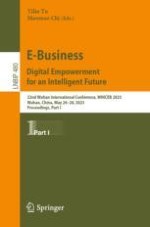2023 | Buch
E-Business. Digital Empowerment for an Intelligent Future
22nd Wuhan International Conference, WHICEB 2023, Wuhan, China, May 26–28, 2023, Proceedings, Part I
herausgegeben von: Yiliu Tu, Maomao Chi
Verlag: Springer Nature Switzerland
Buchreihe : Lecture Notes in Business Information Processing
